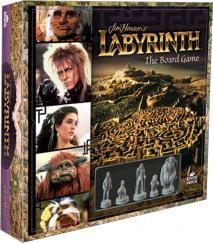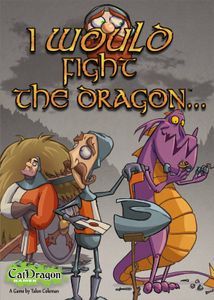Tickets, please! Thank you, sir or madame, and welcome to the Moon, one of the most luxurious and prestigious inter-continental trains to exist. It may not be the fastest, but it's one of the best, if I do say so myself. Well, on to the next car, must check everyone has their Ticket to Ride. Tickets, please!
/pic38668.jpg)
BACKGROUND: Ticket to Ride is a board game for 2-5 players, published by Days of Wonder and designed by Alan R. Moon. Connect the cities of North America with the most modern and convenient way of traveling, the steam powered engine.
GAMEPLAY: Each player starts with being dealt 3 Destination Tickets secretly, which determine what routes a player must take over the course of the game. A player may keep either 2 or 3 tickets, with any not kept placed at the bottom of the Destination deck. A player may take only one of three actions on their turn, Draw Train Car cards, Claim a Route, or Draw Destination Tickets.
/pic38674.jpg)
DRAW TRAIN CAR: Each player gets a hand of various colored Train Car cards. Each turn, a player may either claim a combination of 2 solid colored cards from the 5 cards in the stockpile and/or draw blindly from the deck, or 1 rainbow colored Locomotive. Players may not take a Locomotive if they claimed a Train Car card. If 3 or more Locomotives are ever in the stockpile, shuffle the stockpile into the deck, and reveal 5 new cards, repeat as necessary
CLAIM A ROUTE: Instead of drawing cards, players may instead claim a route on the board. To do so, players must discard a number of matching colored train cards equal to the number of spaces between two connecting cities that hasn't been claimed, then place their trains onto that route. Some are grey, and can be claimed with any trains, but some routes are colored, and can only be claimed with matching colors. If there are any two wide, the player only claims one of those sides, so a 2 by 4 would only require 2 cards, and connect a straight line to the next city. Locomotives count as any color.
/pic38676.jpg)
DESTINATIONS: Each Destination card has a set of two cities that players must make an unbroken line of trains from. Any pathway may be used, but a set of trains must go from one city to the other in a continuous path with no breaks. Each Destination has a number of points to score in the bottom right if a player makes that destination, or deduct if they fail that destination at the end of the game. If a player chooses to Draw Destination Tickets, that player draws 3 Destination cards. They must keep at least 1 card, but can keep 2 or all 3. Any not kept go to the bottom of the Destination deck.
WINNING: Each time a route is claimed, the player scores based on the length of the route, kept track of on the sides of the board. Once a player is down to 2 or fewer trains, every player gets 1 more turn. Then, points for the longest unbroken route and all successful and unsuccessful Destinations are scored after the last players turn. The player with the most points wins.
CONCLUSION: Ticket to Ride is surprisingly easy to learn, and I've always had fun playing it. It allows for strategy without being overly complicated. It is no surprise, then, that this game has had the lasting power it has, with over 20 expansions and stand alone variations. With all these versions, the base game can seem a little tame and bland by comparison, with many players I've seen preferring an alternate version or adding expansions. It also is never a short game. With each player getting 45 trains to place down, even an ideally quick game is still going to last a half hour or so. Still, it never really outstays its welcome, even if things can seem to get a little tedious towards the end. There is also the point that once you have an idea of where players are going, it's possible to slow down or even prevent players from succeeding on their tickets. Overall, this is a strong game that deserves the recognition it has. If you haven't tried this, find some friends and catch this train.


/pic3686323.jpg)
/pic169316.jpg)
/pic175591.jpg)
/pic143783.jpg)
/pic196580.jpg)

